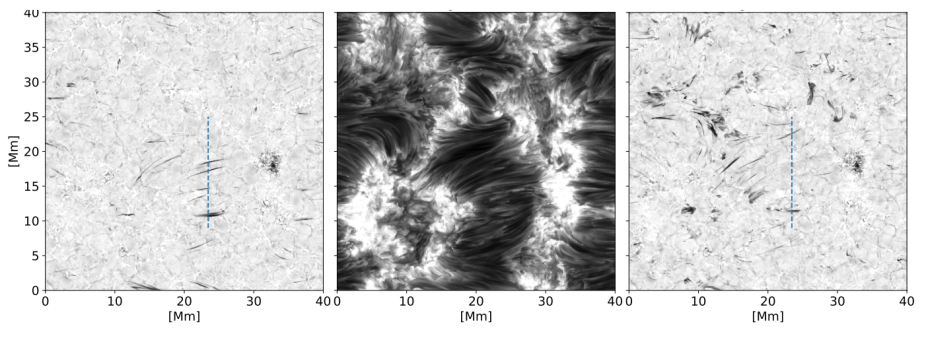The Astrophysical Journal: Rapid blue- and red-shifted events (RBEs/RREs) may have an important role in mass-loading and heating the solar corona, but their nature and origin are still debatable. We aim to model these features to learn more about their properties, formation and origin. A realistic three-dimensional (3D) magneto-hydrodynamic (MHD) model of a solar plage region is created. Synthetic H α spectra are generated and the spectral signatures of these features are identified. The magnetic field lines associated with these events are traced and the underlying dynamic is studied. The model reproduces well many properties of RBEs and RREs, such as spatial distribution, lateral movement, length and lifetimes. Synthetic H α line profiles, similarly to observed ones, show strong blue- or red-shift and asymmetries. These line profiles are caused by the vertical component of velocity with magnitudes larger than 30−40 km/s that appear mostly in the height range of 2−4 Mm. By tracing magnetic field lines, we show that the vertical velocity that causes the appearance of RBE/RREs to appear is always associated with the component of velocity perpendicular to the magnetic field line. The study confirms the hypothesis that RBEs and RREs are signs of Alfvénic waves with, in some cases, a significant contribution from slow magneto-acoustic mode.

Synthetic Hα images generated from a MURaM simulation of a bipolar network region. The magnetic field configuration is visible from the distribution of long fibrils in the Hα core shown in the middle panel. Panels on the sides show synthetic rapid blue- and red-shifted events (RBEs/RREs) . The wavelength positions correspond to Doppler shifts of ±36 km/s. Thin elongated dark features are visible in both Hα, wings, resembling their observed counterparts. Besides thin features, the red-wing image shows slightly more spread-out structures especially close to the ’slope’ generated by the inclined magnetic field around [7, 25] Mm. The dark circular structure at [33, 20] Mm visible in both wings is a pore.